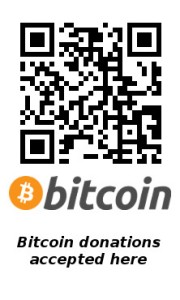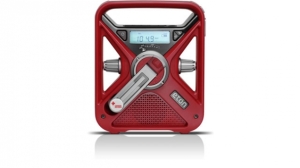During an emergency, staying connected and informed is vital for the safety of you and your family. While radio and television remain some of the best ways to learn what is happening during times of emergency, I strongly recommend one more vital tool to keep you informed: Twitter.
I have talked about this before, where I believe everyone should be on Twitter, and that is because it is one of the easiest methods to stay in touch and connected during an emergency. Here is why:
Radio and television is great to keep you informed as to what is going on, but television relies on the power being on. When there is a power outage, your TV probably won’t be very helpful. Both radio and TV also have the problem of not being able to necessarily provide you with the exact information you need for your area at the time you need it. Since broadcasts are live, and often need to cover a larger geographic area, which also may be hit, waiting for information on your specific neighbourhood may be hard to find. (Have you ever watched the results from an election and wondered when they were going to get to your riding, only to look away for a moment and find it has passed?! same idea)
The value with Twitter is it can help condense information you need into a quick bite of information that is relevant to your immediate needs. Let’s take an example of a power outage. Not too long ago, my neighbourhood had a power outage during a major cold snap. While it wasn’t a big emergency, local media was reporting on the cold and some cases of power going out, but nothing specific about my area. By searching on Twitter for the power utility in my region, I was able to see from their Twitter feed they were dealing with a number of outages at the time. I was then able to Tweet to them that my neighbourhood was affected, and not long later I saw a tweet that they were aware of the outage and had a crew looking into it. In a subsequent tweet, the explained there was a blown transformer and the crew gave an ETA on when they expected it to be fixed.
This is information that I would not have found on local news media because it was such a small area, but using twitter, I was not only able to learn about the issues, I was able to directly let those know that this area needed assistance.
So what is the best way to use Twitter during an emergency? First is preparation before the emergency hits. If you don’t already have one, sign up for a Twitter account. It’s free and takes very little time. Then download the app on your smartphone and sign in. (More on this later)
Once you have a twitter account, start searching for some accounts to follow. Maybe you want to use Twitter to follow some celebrities, or look for inspirational quotes, but here is what you need to make Twitter work for you in an emergency. Look for the following accounts and start following them:
-The official account of the City or Town you live in
-The official account of the region or County you live in
-Trusted local, regional and national news accounts (TV, Newspaper, Radio, etc.)
-Local power authority
-Local or regional police and fire services
-Weather service official accounts
-Emergency Management or Coordination offices accounts
You will notice I use the work OFFICIAL a lot in that list. The reason is with Twitter, it’s so easy to see something and retweet it. If you come across some information you want to reshare, you need to be sure it is accurate information. Too often hoaxes, wrong information or misinformation is sent out that could be harmful if followed. Sometimes it’s by accident, other times it’s on purpose. If you follow official accounts you stand the best chance of getting the right information when you need it.
Now that you have followed those accounts, make a list. Twitter allows you to make lists of specific topics and add those accounts to that list. By viewing the list in Twitter you can have a condensed list of all the tweets that should be related to the situation. There shouldn’t be any additional chatter from other accounts you follow so there is no need to scroll through irrelevant stuff to find the information you need.
Using #Hashtags is another great way to find out what is going on during an emergency. A Hashtag is a tag which you use to find other tweets on the same topic. As people write out a tweet, they will include the # symbol, followed by a short message related to the topic. When you search for the hashtag, you will see all the tweets using the same hashtag. As you follow your trusted sources, watch to see what hashtags they use in their tweets. In my area, during any weather related emergency, the common hashtag is #ONSTORM . By searching for this hashtag, I can see what everyone is talking about related to this topic. Hashtags are where you will get a lot of information, but just remember, this is where the false information can also be seen, so make sure to take it with a grain of salt, unless it comes from one of your trusted sources. You can monitor the conversation, or jump in and share what you are seeing or what is happening in your area.
Remember, Twitter isn’t a one way conversation. While it’s great for keeping you informed during an emergency, it is also vital to keep your friends and loved ones apprised of your situation. Instead of everyone calling you to ask if you are doing okay, you can send out a tweet with an update on how you are doing. It will help keep the phone lines free in case they are needed.
So, why did I insist you install Twitter on your smartphone? Your TV may go out during an emergency, and not everyone has a radio with them all the time (Although there should be one pretty close by that takes batteries) but even with a power out, your smartphone should still work. If your home Internet goes down, your smartphone should be able to connect to a cell tower. Chances are your smartphone is with you most of the time, so it’s your best lifeline during an emergency.
If you are finding the phone network is getting congested and phone calls are having trouble connecting, or if the data network is running slow, you can also make Twitter updates by SMS, making Twitter one of the most versatile forms of communicating information.
Twitter (and other social media networks) have matured enough that they should be considered an important part of any emergency preparedness plan. They keep you informed and connected, which in an emergency could save your life.




